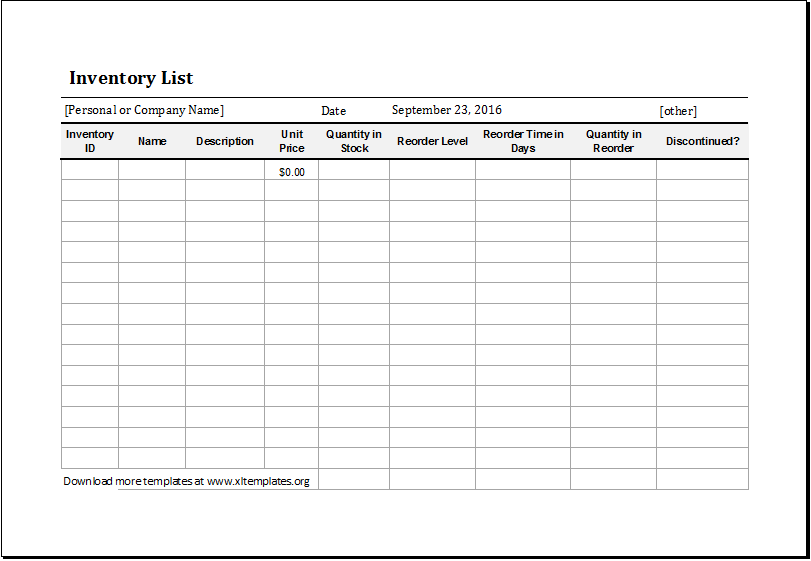Business inventory list sample takes center stage as we delve into the intricacies of inventory management. This comprehensive guide will equip you with the knowledge and tools to organize, track, value, and manage your inventory effectively, ensuring optimal business efficiency and profitability.
From understanding the importance of inventory organization to mastering the art of inventory tracking, we’ll cover all the essential aspects of inventory management. By the end of this journey, you’ll have a solid grasp of the strategies and techniques that will empower you to optimize your inventory levels, minimize waste, and drive your business towards success.
Inventory Organization: Business Inventory List Sample

Organizing inventory is crucial for business efficiency, ensuring smooth operations and accurate record-keeping. It helps businesses track inventory levels, optimize storage space, reduce waste, and enhance overall profitability.
Various inventory organization methods exist, each tailored to specific business needs. Some common approaches include:
FIFO (First-In, First-Out)
- Assumes that the oldest inventory items are sold first.
- Helps prevent spoilage and ensures fresh products are sold first.
LIFO (Last-In, First-Out), Business inventory list sample
- Assumes that the most recently acquired inventory items are sold first.
- Can result in higher reported profits during inflationary periods.
ABC Analysis
- Classifies inventory items based on their value and usage.
- Helps businesses focus on managing high-value and critical items more effectively.
In addition to these methods, businesses can also leverage inventory management software to streamline inventory tracking and organization. These systems provide real-time inventory visibility, automate ordering processes, and generate reports for better decision-making.
Inventory Valuation

Inventory valuation is the process of determining the monetary value of inventory items. This is important for financial reporting purposes, as inventory is a significant asset for many businesses.
There are several different methods for valuing inventory. The most common methods are:
- Cost: This method values inventory at its historical cost, which is the amount paid to acquire the inventory.
- Retail: This method values inventory at its retail price, which is the price at which the inventory is sold to customers.
- Market value: This method values inventory at its current market price, which is the price at which the inventory could be sold to another business.
The choice of inventory valuation method can have a significant impact on financial statements. For example, using the cost method will result in a lower inventory value than using the retail method. This can lead to lower reported profits and lower taxes.
Example
Let’s say a company purchases 100 units of inventory for $10 per unit. If the company uses the cost method, the inventory will be valued at $1,000. If the company uses the retail method, the inventory will be valued at $1,500 (assuming the retail price is $15 per unit).
If the company uses the market value method, the inventory will be valued at $1,200 (assuming the market price is $12 per unit).
Last Recap

As we conclude our exploration of business inventory list samples, remember that effective inventory management is the cornerstone of a well-run business. By implementing the strategies and techniques Artikeld in this guide, you can gain control over your inventory, reduce costs, improve customer satisfaction, and position your business for long-term growth.
Embrace the power of inventory management and unlock the full potential of your enterprise.
